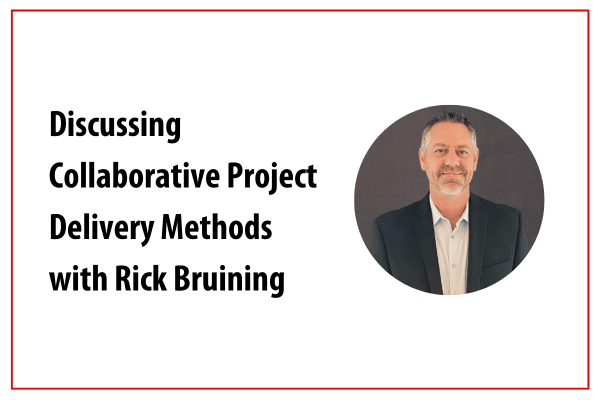Collaborative Construction: Maximizing efficiency by embracing collaborative project delivery methods
In the specialized sector of justice and corrections construction, project delivery is pivotal. Traditionally dominated by the design-bid-build approach, the industry is witnessing a gradual shift towards more collaborative methods such as construction manager at risk (CMAR) and design-build. This evolution underscores the importance of choosing a project delivery method that fosters cohesive teamwork among the owner, designers, engineers and builders, ultimately leading to faster, better and more cost-effective project completion.
Rick Bruining, director of justice in the BELL Building Division, is an industry veteran with 37 years of experience. He has gained substantial knowledge in the justice and corrections market sector through his previous experience as an agency construction manager, construction administration, detention equipment contractor, general contractor, design-build and construction manager at risk on local, federal, state and private justice and corrections projects. He has been involved in over 175 justice and correctional projects nationwide with over 34,000 beds and is recognized as an expert in the field.
We sat down with Rick to learn more about the importance of all parties taking a collaborative approach to justice projects.
Q: What are the differences between the design-bid-build, CMAR and design-build project delivery methods?
Rick: Design-bid-build is a conventional method where an architectural firm designs the project and gives plans to bidders. Often only one bid is placed, or, if there are multiple bids, the least expensive option is selected, sometimes resulting in the least qualified builder for the project. This approach prioritizes fees over qualifications and can be less collaborative. However, hiring the most qualified contractor leads to a higher quality product and more collaborative experience.
In the CMAR method, the architectural firm designs the project while working closely with the construction manager (CM) for cost and constructability advice. The CM also provides a guaranteed maximum price (GMP), which locks in project costs ahead of time. This approach is more collaborative and cost-effective, allowing the owner to choose a CM based on qualifications, ensuring an experienced and capable builder.
The design-build approach allows the owner to hire a design-build team, typically led by the builder, responsible for both designing, constructing and providing a GMP for the project. This method is often used for larger projects and is the most collaborative method, generally leading to a less expensive and faster project.
Q: Why is collaboration so important?
Rick: Early and continuous collaboration is crucial for the success of all construction projects, especially in the justice market, because it ensures that all involved parties share the same project views and expectations. In a CMAR delivery method, for example, the builder provides periodic budgets to keep the project on track financially throughout all design phases and into a final GMP.
Based on the provided budgets, designers and builders collaborate to explore alternative building components, methods and manufacturers to optimize cost as well as lead times and constructability. This level of collaboration ensures a smooth, efficient and cost-effective project delivery, minimizing surprises and maximizing the project’s quality and timeliness.
Q: How does collaboration impact justice projects?
Rick: Collaboration is important between contractor and design partner to ensure that everyone shares the same project views. Justice work has so many moving parts and lack of clarity between parties can lead to discrepancies, such as mismatched equipment voltages, inconsistencies between electronically controlled doors and mechanical lock schedules, or lighting controls that are not aligned with electrical plans. Risk can be eliminated by ensuring the both the design team and the builder have a common vision – additionally, it’s important that these items are assessed and mitigated early in the construction process.
Embracing more collaborative project delivery methods like CMAR and Design-Build can lead to better, more efficient justice project outcomes. At BELL, we are always focused on building better, and that starts with fostering a collaborative environment that allows us to deliver superior results for our clients.
Have questions about justice construction? Please contact us.

